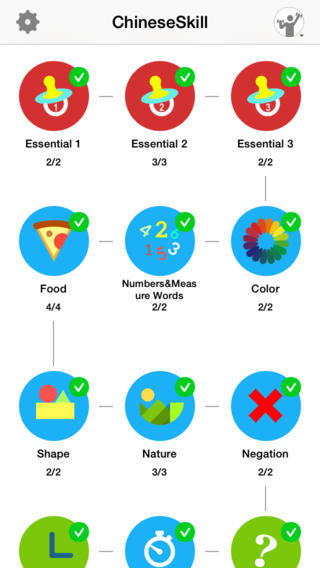This is A Comprehensive Guide to Understanding and Choosing the Right Chinese Writing System for Your Business Needs
When entering the Chinese market or engaging with Chinese-speaking customers, foreign businesses must consider the differences between Simplified and Traditional Chinese writing systems. In this article, we will discuss the key differences and provide suggestions for foreign businesses on how to navigate the two systems.
Table of Contents:
I. Overview of Simplified and Traditional Chinese
- Character complexity
- Number of characters
- Historical origins
- Geographic usage
- Digital context
- Art and calligraphy
- Learning curve
II. Business Implications and Suggestions
- Language Localization
- Marketing and Branding
- Customer Communication
- Legal and Official Documents
- Staff Training and Recruitment
III. Conclusion
IV. Maximize Your Business Potential in China with an Expert Review
I. Overview of Simplified and Traditional Chinese
Simplified Chinese and Traditional Chinese are two writing systems for the Chinese language. They primarily differ in their character sets, with Simplified Chinese using a reduced number of characters with simpler strokes, while Traditional Chinese maintains the original, more complex character set. Here’s a summary of the key differences between the two systems:
Character complexity
Traditional Chinese characters tend to be more complex, with a greater number of strokes per character. Simplified Chinese characters, on the other hand, have been reduced in complexity, with fewer strokes and more straightforward structures.
Number of characters
Simplified Chinese has fewer characters than Traditional Chinese. The simplification process eliminated some characters, combined others, and created new, simpler forms.
Historical origins
Traditional Chinese has been used for thousands of years, while Simplified Chinese was introduced in the 1950s and 1960s by the People’s Republic of China in an effort to improve literacy and promote communication.
Geographic usage
Simplified Chinese is the official writing system in Mainland China and Singapore. Traditional Chinese is used in Taiwan, Hong Kong, and Macau. Overseas Chinese communities, particularly those established before the simplification, often use Traditional Chinese as well.
Digital context
With the widespread use of computers and digital communication, Simplified Chinese has become more prevalent due to its ease of input and character recognition. However, Traditional Chinese is still widely used in online forums, media, and literature.
Art and calligraphy
Traditional Chinese characters are often considered more aesthetically pleasing and are typically used in calligraphy and other art forms, as they preserve the historical and artistic value of the language.
Learning curve
For non-native learners, Simplified Chinese can be easier to learn and recognize due to its reduced complexity.
However, understanding both systems can be helpful for reading a wider range of texts and for communication with speakers from different regions.
Despite these differences, Simplified and Traditional Chinese both represent the same spoken language, and speakers of Chinese can generally understand written text in either system, especially with some exposure and practice.
II. Business Implications and Suggestions
Before delving into the specific business implications and suggestions related to the differences between Simplified and Traditional Chinese, it is important to understand the broader context. The choice between Simplified and Traditional Chinese writing systems can significantly impact various aspects of your business, such as language localization, marketing, customer communication, legal documentation, and staff training. By carefully considering these factors and tailoring your approach to the specific needs and preferences of your target audience, you can ensure a smoother entry into the Chinese market, build strong relationships with customers, and ultimately achieve greater success.
Language Localization
When localizing content for the Chinese market, it is crucial to choose the appropriate writing system based on your target audience. For businesses targeting Mainland China and Singapore, Simplified Chinese is the way to go. For those aiming for Taiwan, Hong Kong, and Macau, Traditional Chinese is more suitable. Consider providing both options for overseas Chinese communities.
Marketing and Branding
Ensure that your company’s marketing materials, website, and social media presence are consistent with the chosen writing system. This will not only enhance brand recognition but also demonstrate cultural sensitivity and understanding. If needed, work with professional translators to ensure accurate and culturally appropriate translations.
Customer Communication
When communicating with Chinese-speaking customers, use the appropriate writing system for the region you are targeting. Make sure that customer service representatives are trained in both systems to provide seamless support. This applies to both written and verbal communication.
Legal and Official Documents
Contracts, agreements, and other legal documents should be prepared in the appropriate writing system. Engage local legal counsel or qualified translators to ensure accuracy and compliance with local regulations.
Staff Training and Recruitment
When hiring staff for your Chinese operations or customer support, prioritize applicants who are proficient in both Simplified and Traditional Chinese. Offer training for existing employees to improve their proficiency in both systems and ensure effective communication with Chinese-speaking customers and partners.
III. Conclusion
Understanding the differences between Simplified and Traditional Chinese and choosing the right writing system for your target audience is crucial for foreign businesses entering the Chinese market. By localizing content, tailoring marketing materials, and ensuring effective communication, businesses can demonstrate cultural sensitivity, build strong relationships with Chinese-speaking customers, and ultimately succeed in their ventures.
Maximize Your Business Potential in China with an Expert Review
Are you confident that your Chinese website or app is fully optimized for the local market?
Don’t let simple mistakes hold your business back from achieving its full potential in China. Our expert review will help you identify and fix any issues, ensuring a smooth launch and ongoing success.
By working with our team of professionals, you can avoid the common pitfalls that many businesses face when entering the Chinese market. We understand the unique challenges of localizing content, marketing, and user experience for Chinese users, and our expert review will ensure that your website or app is tailored to their preferences and expectations.
Avoid Costly Mistakes and Save Money by Ensuring Your Chinese Website and Apps are Ready for Success
As a special bonus, we’re offering a FREE guide on “36 Things to Check Before Launching a Website in China.” This comprehensive checklist will help you ensure that your site is fully prepared for success and that you’re not leaving any money on the table.
Don’t miss out on this valuable opportunity to fine-tune your Chinese website or app and maximize your business potential in China. Our expert review is an investment that will save you time, money, and frustration in the long run.
We’ll make sure your website or app is poised for success in the lucrative Chinese market.


